Strong Roots that Bind


















Walking through a longleaf forest, especially in the fall season, my attention is drawn to the trees and the colors of the wildflowers and grasses that put on a show this time of year. This is where we see the timber and other products produced by the forest and experience the sights, sounds, and smells of this diverse ecosystem. In focusing on the aboveground components of the forest, though, we may be overlooking what is happening below the surface to support this iconic habitat. The processes and the myriad of organisms at play in the soils beneath the pines are essential to maintaining a functioning forest ecosystem. But I’m thinking specifically about the complex root systems that provide the foundation for the many plant species that call this forest home.
One of the myths associated with longleaf pine is that they are slow growers in the early years. From what we can see aboveground, the trees do not appear to be growing much during the grass stage, but they are more than making up for that “inactivity” with the amount of growth happening underground. The tree is busy putting down a deep tap root that not only builds a structural support system for the tree but also accesses water in sites that are typically low-moisture habitats. The groundcover species that are such vital members of this community also build extensive root systems, helping
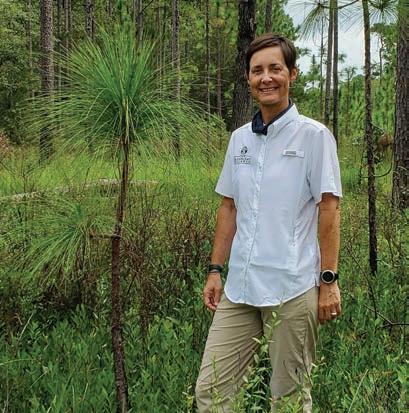
hold the soils together and reach deep resources. These root support systems add to the resiliency of longleaf habitats in the face of more frequent drought periods and severe storm events. As we move forward, these adaptations will give longleaf an advantage in a changing climate.
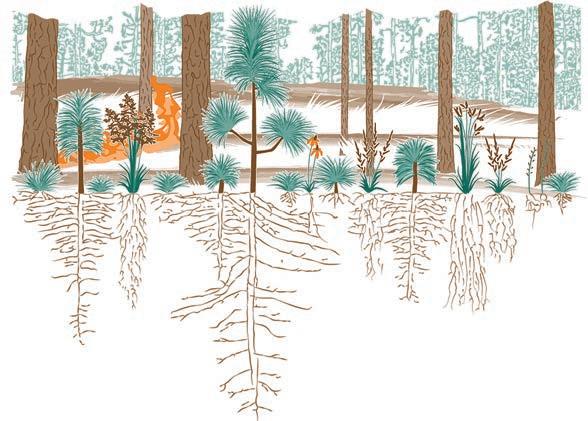
In a way, The Longleaf Alliance has acted as the roots and structural support for the longleaf restoration effort that has developed over the last 30 years. Rhett Johnson and Dean Gjerstad laid the groundwork for The Alliance and brought together a diverse group of stakeholders to build a working collaborative focused on reversing longleaf’s decline. Much like a longleaf seedling, this effort started small but has now grown into a successful partnership effort with deep roots and far-reaching impacts across the region.
This month in Wilmington, we will be gathering for the 14th Biennial Longleaf Conference to celebrate our successes, share ideas and information about projects, learn about the latest longleaf-related research, and catch up with partners and friends. You do not want to miss this opportunity to connect with others from around the Southeast who are equally committed to restoring and conserving longleaf.
I hope to see you all in Wilmington!
Amanda Haralson –
Chair
Bill Owen –
Vice Chairman Rufus Duncan –Secretary/Treasurer Reese Thompson –Past Chairman Carol Denhof
President carol@longleafalliance.org
Lynnsey Basala
Vice President for Development lynnsey@longleafalliance.org
Ad Platt Vice President for Operations ad@longleafalliance.org
Anne Rilling Vice President for Business anne@longleafalliance.org
Ryan Bollinger
Regional Initiatives Director & LIT Consul ryan_b@longleafalliance.org
Vernon Compton GCPEP Director vernon@longleafalliance.org
Lisa Lord
Conservation Programs Director lisa@longleafalliance.org
Charlie Abeles
Wildlife Biologist charlie@longleafalliance.org
Jacob Barrett
Technical Assistance & Training Specialist jacob@longleafalliance.org
Sarah Brazil
Natural Resource Technician I sarah_b@longleafallince.org
Karen Zilliox Brown Resource Specialist karen@longleafalliance.org
Kameron Burgess Wetland Resource Crew Lead kameron@longleafalliance.org
Sarah Crate Outreach Communications Coordinator sarah@longleafalliance.org
Ethan Dickey
Wetland Resource Technician ethan@longleafalliance.org
Samantha Dillon Wildlife Technician samantha@longleafalliance.org
Alexis Feysa
Wetland Resource Technician I alexis@longleafalliance.org
Susan French GA Sentinel Landscape Coordinator susan@longleafalliance.org
Lucas Furman GIS Support Specialist lucas@longleafalliance.org
Jennie Haskell Coastal Partnership Coordinator jennie@longleafalliance.org
Wendy Ledbetter Fort Stewart/Altamaha Partnership Coordinator wendy@longleafalliance.org
Emma McKee Invasive Species Coordinator emma@longleafalliance.org
Kay Nail
Accounting Specialist kay@longleafalliance.org
Alan Patterson
Natural Resource Technician I alan@longleafalliance.org
Cody Pope
Western Technical Assistance & Training Specialist cody@longleafalliance.org
Madison Richert
Wetland Resource Technician madison@longleafalliance.org
Kaiden Spurlock
Natural Resource Supervisor kaiden@longleafalliance.org
Donna Vassallo
Natural Resource Technician II donna@longleafalliance.org

Casey White
Administrative Assistant office@longleafalliance.org
Craig Blair
Ruth Cook
Patrick Franklin
Luther Jones
Angus Lafaye Bill Owen Mickey Parker
Josh Raglin Mac Rhodes Latimore Smith
Joan Walker Marc Walley Lauren Ward
The Longleaf Alliance's mission is to ensure a sustainable future for longleaf pine ecosystems.
Apply fall site-preparation herbicides.
+ For effective treatment, foliar active herbicides such as glyphosate (Roundup®/Accord®) should be applied to pasture grasses before the first frost.
+ Triclopyr (Garlon®) may be delayed until after the first frost to target waxy leaf competitors while minimizing impact to herbaceous groundcover.
+ Allow time for soil active herbicides to break down before planting longleaf, especially when using imazapyr (Arsenal®/Chopper®) or Metsulfuron-methyl, (Escort®/Patriot®). The waiting period will vary based upon the rate applied, date applied, rainfall since application, and soil type.
Mechanical site preparation in advance of planting season.
+ Scalp agricultural sites. Remember to stay strictly on the contour and pick the scalper up regularly; leaving these plugs (or mini-water bars) in the furrow will significantly reduce erosion.
+ Subsoil or rip sites with hardpans, but remember, do not plant seedlings directly into the sub-soiled/ripped furrow. Plant just beside the rip, and the taproot will find it.
It is never too early to plant longleaf if the following conditions are met: the site is prepared, there is adequate soil moisture, seedlings are available, and a planting crew is available.
+ Clean up or establish fire lanes for site prep or fuel reduction burns.
+ Not good burning weather? Conduct post-burn evaluations to determine if previous burns achieved objectives, including woody control.
Harvest native herbaceous seeds.
+ Certain species, such as the Indiangrasses, ripen and fall in a very short time window (as little as one to two weeks).
+ Wiregrass can lose all of its ripe seed if a cold front blows through.
Order native seed for understory restoration.
+ Seed from local ecotypes and endemic species is limited and expensive.
+ Although some landowners and land managers have the time and expertise to collect their own, most restoration will occur with seed purchases from the few seed companies that sell southeastern sourced seed.
+ For invasives like cogongrass or climbing fern, recommended prescription is 4% glyphosate with surfactant, with thorough coverage, for glyphosate formulations that contain 41% active ingredient (4.0 lb./gal.). Map these infestations for follow-up treatments in spring and fall until control is achieved.
+ In existing stands, avoid any herbicide contact with green needles of longleaf (or other desirable plants).
Drier conditions typical of the fall season favor pine thinning operations.
+ Avoid disturbance around intermittent wetlands as some amphibians, especially salamanders, move to seasonal breeding ponds when heavy rains occur.
+ Use caution with any mechanical operations around gopher tortoise burrows, as any newly hatched tortoises will be nearby and shallow.
Reach out to The Longleaf Alliance with any longleaf management questions at longleafalliance.org/contact.

Dear Longleaf Alliance, I am new to the South, to longleaf, and especially to fire. I hear you mention prescribed burning frequently, and I can tell it is essential. But how do I start? My trees were planted this past spring.
Dear Willing, Welcome to the South and longleaf! As you have discovered, longleaf pine (Pinus palustris) needs fire to thrive. By engaging and learning about prescribed fire, you will know when and how to apply fire to your trees.

Prescribed fire is one of those subjects we can study our whole lives. In fact, we SHOULD learn something every time we conduct a burn to continually improve our management. We all began inexperienced, and there is much more help now than a few years ago.
We suggest beginning with some training to lay the proper foundation. Even if the plan is to hire others to conduct the burn, the more we know about prescribed fire, the more likely we will achieve our objectives. And today, there are many educational opportunities, even virtual options.
Every state in the longleaf range has forestry and wildlife agencies and extension programs; these are great places to start. You will find resources about burn planning, fire management, training opportunities, and even burning services through their highly knowledgeable staff and informative websites. Don’t overlook material on post-burning assessments either (fire effects monitoring). One of the tools that help us learn and improve is understanding how well we (or our contractor) did last time.
In addition to reading prescribed fire resources and watching informational videos, seek in-person training:
• “Learn and Burn” events are an opportunity to receive hands-on experience through prescribed fire demonstrations. These are now offered across the South, though they may use a slightly different name.
• For deeper understanding and additional liability protection, become a Burn Manager in your state. You will write, then improve, burn plans for your property.
Again, this leads to better results whether you do the burn or hire a contractor.
• If you get a chance, sign up for The Longleaf Alliance’s Fire and Longleaf 201 Academy, a three-day course that will complement any other training you receive. Check upcoming events at longleafalliance.org.
If you are a hands-on manager, gain experience by finding neighbors with similar challenges, then look for ways to help each other, like splitting and sharing the use and maintenance of tools and equipment. Working together saves time and provides extra hands and tools on the fire line resulting in more experience with different fuels and situations. Prescribed Burning Associations (PBAs), even if they are a little out of your range, are a great way to connect. These will be some of the most rewarding experiences you will have in land management. Reliable people doing important and challenging work, successfully and safely, together.

We can’t list all of the online resources that you might find helpful, but we’ve included several places to get started on our website at longleaf.info/rxfire. Make sure to visit the Southeast Prescribed Fire Update, which includes links to each state’s Prescribed Fire Council, and signup for the Driptorch Digest newsletter from the Southeast Regional Partnership for Planning and Sustainability (SERPPAS) Prescribed Fire Work Group.
Sincerely, The Longleaf Alliance



Map showing distribution of Cooley's meadowrue, U.S. Fish and Wildlife Service. s s
Cooley’s meadowrue. Photo by James Henderson, Golden Delight Honey, Bugwood.org.

A rare perennial, dioecious, and rhizomatous herb. Rarity is owed to the conjoined factors of limited genetic diversity, pollen/seed production, and wind dispersal success of its short seed life.
Height: 3-6 ft, erect in sun but often leaning in shade.
Flowering: A dioecious species, Cooley’s meadowrue has separate male and female flowers. Female plants have green sepals and males have white-yellow lanceolate sepals, both sexes with an absence of petals. Purple or white stamens radiate out into an inconspicuous globular flower with yellow pollen tips from June-September.
Extant populations limited to intermittent wet-pine savanna drainages and ecotone clearings in documented counties of North Carolina (Brunswick, Columbus, New Hanover, Onslow, and Pender), Georgia (Worth and Doughtery, though these populations have uncertain taxonomy), and Florida (Walton).

The wet savanna and bog habitats where the meadowrue dwells face pressure from poaching, fire suppression, and development associated with high-impact silviculture and agriculture. Remnant seed banks depend on cold stratification and fire management with one to five-year fire return intervals. Cooley's meadowrue is critically imperiled and federally listed as endangered.
Radford, A.E., H.E. Ahles and C.R. Bell. 1968. Manual of the Vascular Flora of the Carolinas. University of North Carolina Press, Chapel Hill N.C.
NatureServe. 2022. NatureServe Explorer [web application]. NatureServe, Arlington, Virginia. (explorer.natureserve.org, Accessed: June 16, 2022).
Cooley's Meadowrue. 2022. U.S. Fish & Wildfire Service (n.d.). FWS.gov. Retrieved June 16, 2022, from https://www.fws.gov/species/cooleys-meadowrue-thalic trum-cooleyi



Okaloosa darters are just one of over 150 currently recognized species of darters (Etheostoma). They are in the family Percidae, meaning they are related to species such as walleye, saugerties, and yellow perch. They are small fish, rarely exceeding two inches in length.


Although not as brilliantly colored as some of its relatives, the Okaloosa darter is still a subtly handsome fish. Both males and females have a sandy, olive-colored background with large brown blotches running down each side. Mature males develop a row of vibrant orange spots on their dorsal fin.
Okaloosa darters inhabit a small range, almost all of which exists within the boundaries of Eglin Air Force Base in the Florida Panhandle. They live in clear seepage streams surrounded by sandhill habitat. Like many places within the longleaf ecosystem, these streams are extremely delicate. They are especially vulnerable to runoff; sediment deposits choke out the vegetation these fish depend on for cover and breeding.
Okaloosa darters are small, so they need even smaller food. They mainly feed on small insect larvae such as mayfly nymphs, caddisflies, and midge larvae.
Breeding primarily occurs from March to October, peaking in April with a small spike in breeding behavior in October.
Females lay an average of 80 eggs, which are individually attached to vegetation after being laid.

In 1973, the Okaloosa darter was federally listed as endangered. At that time, there were fewer than 10,000 of these fish in the wild. Following decades of conservation efforts, as well as reduction of sediment erosion near road crossings, there are now more than 600,000 Okaloosa darters swimming in the wild. In 2011, the darter was downlisted to threatened, and in late 2021, the U.S. Fish and Wildlife Service proposed removing the Okaloosa darter from the Endangered Species List.
This is an incredible milestone and would not have been possible without the partnerships between Eglin's Natural Resources and Management division (Jackson Guard), U.S. Fish and Wildlife Service, Florida Fish and Wildlife Conservation Commission, and many others.
Florida Fish and Wildlife Conservation Commission. “Okaloosa darter.” 2022. myfwc.com/wildlifehabitats/profiles /freshwater/okaloosa-darter
U.S. Fish and Wildlife Service. 2021. Draft Post: Delisting Monitoring Plan for the Okaloosa Darter (Etheostoma okaloosae). U.S. Fish and Wildlife Service, Florida Air Force Partnership, Niceville, Florida.
WUWF FM. “Okaloosa Darter saved from extinction.” 2022. wuwf.org/local-news/2021-11-18/okaloosa-darter-savedfrom-extinction



Fall means tree planting season is rapidly approaching. If you applied chemical site preparation to reduce competing vegetation, you are likely noticing the targeted foliage browning and dying. You may be watching the weather to identify a good burn day for a site prep burn. As you make final preparations to plant longleaf, remember that planting costs and timelines will vary by site conditions and size, availability of personnel, weather, and equipment.
Seedlings are typically planted between November and March, with some regions in favor of earlier planting for site access and local conditions. Planting before Christmas is ideal to allow the new trees to develop strong roots ahead of anticipated spring droughts.
Once your site preparations are complete, plant when soil moisture is optimal. With an eye on the weather, coordinate with the nursery and planting crew to reduce the storage time of seedlings. Containerized longleaf can be stored longer than bareroot longleaf, but seedlings will only lose vigor the longer they are stored. Avoid planting into severe freezes, as well as warm, windy, and dry conditions.
As soon as you receive your seedlings, evaluate the young plants. Open and sort through the seedlings in a couple of boxes to ensure the trees are hearty and healthy.
Containerized plugs should be firm, not floppy, and wellformed, with many white or cream-colored root tips showing. Plugs should be neither wet nor dry, just slightly moist. If you order bareroot seedlings, check for quality and root development; the bare roots will likely be covered in a hydrogel slurry to improve moisture retention. No need for root pruning — the nursery worked hard to produce a quality seedling with proper root-to-shoot balance.
Cull and count any problem seedlings, including floppies, doubles, hybrids, those with willows, or any with fusiform galls. While the nursery should have culled out inferior seedlings, the landowner may need to remove additional seedlings. Contact the nursery if more than 5% of your seedlings are unsatisfactory. If it is not too late in the season, they will try to correct the problem. This is one more reason to prepare to plant early.
Seedlings with moldy needles are likely dead and should also be culled, but don’t confuse problem mold with signs of mycorrhizae, the beneficial fungus on roots that aid nutrient uptake. Mycorrhizae is typically white and stringy, resembling fine roots. Problematic water mold, on the other hand, will give the seedlings a sour, musty smell if stored too long, too warm, or overwatered.
Plant the trees as soon as possible. Refrigeration is highly recommended if we must store containerized seedlings for a while, but do not allow the seedlings to either freeze or dry out. For bareroot seedlings, aim to plant them as you receive
them or greatly minimize storage to 1-2 days, allowing for good aeration in the cooler (don’t stack them up).
Good planting techniques are essential for survival. There is a right way and a sloppy way to use any tool, including planting tools. Jamming a tree in a hole and stepping on it leads directly to low survival.

When hand planting on cutover sites, plant seedlings with the plug still showing. The terminal bud should not be covered in soil. On agriculture sites that have sandier soils and either scalping or subsoiling, elevate containerized seedlings more and plant beside, not in, the rip line in anticipation of soil movement. Make sure to pack the soil around the seedling to eliminate air pockets. With either hoedad or dibble bar, this is properly a two-stroke method.
If machine planting, the terminal bud should be at or just below the soil line, even more important with bareroot.



With proper use of either planting method, we routinely expect good survival. Pine planting failures result from poor planting technique or poor handling of seedlings. Failed site prep could perhaps also be implicated. All can be avoided.

For more information about proper planting techniques, watch The Longleaf Alliance’s short YouTube video at longleaf.info/Planting.

Remember, the longleaf pine does not put on much aboveground growth the first few years after planting, but that doesn’t mean they aren’t growing. Instead, the seedling’s development occurs underground, establishing a hearty tap root and root system that will pay off later. This stage is called the grass stage, aptly named because the seedling looks like a bunchgrass with long, bright-green needles. Height growth will be noticeable and rapid after the underground root system is established, sometimes several years after planting.
Haywood, J.D., D.J. Leduc, and S.S. Sung. 2013. Comparing Seven Planting Tools for Container-Grown Longleaf Pine Seedlings. Tree Planters’ Notes. Vol 56 (1): 30-34
The Longleaf Alliance. 2007. Keys to Successfully Planting & Establishing Longleaf Pine. longleafalliance.org/wpcontent/uploads/2022/05/Keys-to-Establshing-Longleaf2007.pdf
Every two years, individuals, private landowners, land managers, wildlife biologists, conservation groups, consultants, university researchers, forestry professionals, agency and outreach personnel gather for the largest and longest-running regional conference focused on the restoration and conservation of the longleaf ecosystem – The Biennial Longleaf Conference.
The first Regional Longleaf Conference was held in 1996 in The Longleaf Alliance's home state of Alabama. Since then, the Biennial Longleaf Conference travels throughout the Southeast to accommodate the nine-state geography of longleaf enthusiasts.
1996 | 2022
1996 | Mobile, AL
Longleaf Pine: A Regional Perspective of Challenges and Opportunities
1998 | Charleston, SC
2nd Longleaf Alliance Conference
2000 | Alexandria, LA Forest for Our Future
2002 | Southern Pines, NC
Longleaf Pine: A Southern Legacy Rising from the Ashes
2004 | Hattiesburg, MS
Longleaf Pine: Making Dollar$ and Sense
2006 | Tifton, GA
Seeing the Forest through the Trees
2008 | Sandestin, FL
Forestry in a Changing World: New Challenges and Opportunities
2010 | Columbia, SC
Longleaf Through Time: Yesterday, Today, Tomorrow
2012 | Nacogdoches, TX
Longleaf, as far as The Eye Can See 2014 | Mobile, AL Our Roots Run Deep
2016 | Savannah, GA Growing a Legacy
2018 | Alexandria, LA
Longleaf Reflections: Looking Back, Taking Stock, Making Progress
2020 | Virtual Longleaf - the Resilient Landscape
2022 | Wilmington, NC Rekindling Our Connections
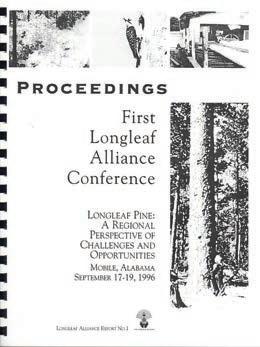
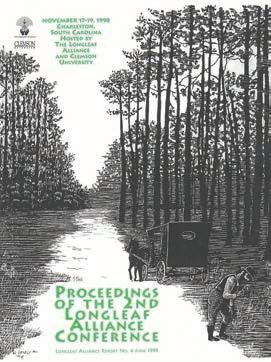
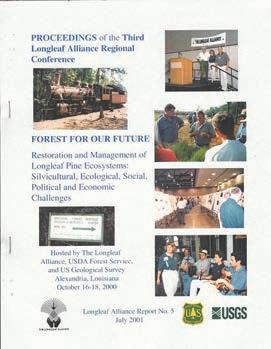

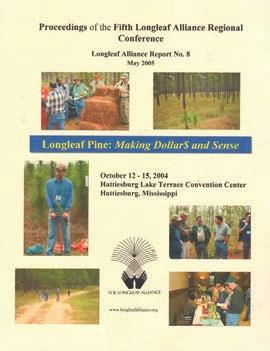




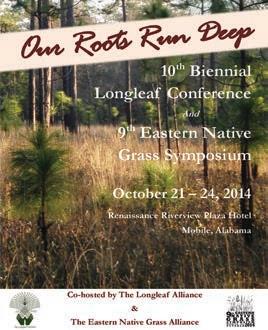

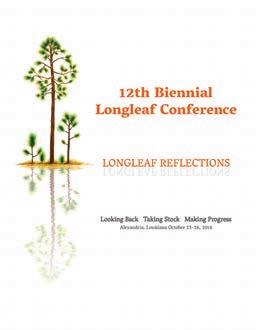

The Regional Longleaf Awards Program, offered in conjunction with the Biennial Longleaf Conference, recognizes individuals and organizations that have made significant contributions to longleaf restoration and conservation across the southeastern U.S.
The Longleaf Alliance extends our sincere gratitude to these teams and individuals for their positive efforts to conserve the longleaf forest. “We are honored to be able to recognize such an outstanding group of individuals and organizations this year. Each recipient, in their own way, has made significant impacts on longleaf pine ecosystems, and we greatly appreciate their dedication to ensuring that these forests will continue to grow and thrive for years to come,” said Carol Denhof, President of The Longleaf Alliance.
The Bill Boyer Natural Resource Professional of the Year Award: recognizes a natural resource professional who has made outstanding contributions within the field of longleaf ecosystem conservation – Stephanie Hertz, Texas A&M Natural Resources Institute
The Palustris Corporate Achievement Award: recognizes a corporation with long-standing commitment toward conservation of the longleaf ecosystem – Milliken Advisors, Inc.
The Gjerstad/Johnson Landowner of the Year Award: recognizes a private landowner for ensuring the future of the longleaf ecosystem on private land – Herbert Hodges & the Willie Hodges Estate Family Farm, Georgia
The Burner Bob® Prescribed Fire Champion Award: recognizes an individual or organization for outstanding efforts in championing prescribed fire to ensure the future of the
longleaf ecosystem on private land – Johnny Stowe, South Carolina Department of Natural Resources
True Longleaf Champion Awards: recognize a lifetime of dedication to the conservation and restoration of the South’s iconic forest – Randy Browning, Dr. Martin Cipollini, Julie Moore, and Dr. Lytton J. Musselman
Natural Resource Conservation Service Team Achievement Award: recognizes an NRCS team that has gone above-andbeyond the call of duty in delivering longleaf restoration for private landowners – Working Lands for Wildlife – Gopher Tortoise Initiative
Department of Defense Team Achievement Award: recognizes a DoD team that has excelled in managing and restoring the longleaf ecosystem on Military Installations – DoD Team at Military Ocean Terminal Sunny Point, North Carolina
U.S. Fish and Wildlife Service Team Achievement Award: recognizes a USFWS team for their exemplary management and restoration of the longleaf ecosystem for wildlife. – USFWS Team at St. Marks National Wildlife Refuge, Florida
USDA Forest Service Team Achievement Award: recognizes a USDA FS team that has significantly improved and expanded the management and restoration of the Longleaf ecosystem on and around the National Forest System – DeSoto National Forest, Mississippi
Non-Profit Conservation Partner Award: recognizes a nonprofit organization that has significantly improved, protected, and conserved the longleaf ecosystem – Arbor Day Foundation


Most landowners only get a few chances in life to start the next forest. When we have this opportunity, it behooves us to choose the best planting stock available that is appropriate for our site. Quality matters even more when planning for premium products or ecosystem benefits. Higher quality stands are more likely and more economically feasible to be retained for longer rotations and can better realize all the associated environmental benefits, from water quality to wildlife to carbon retention, that come with time.
In addition to providing an array of ecosystem services, longleaf pine stands can be well-suited to produce premium, durable wood products, rather than maximizing fiber, if they are of sufficient quality. For both uneven-aged management objectives as well as more conventional even-aged forest management, we should strive to deploy the best quality of seed we can obtain, matched to that specific site. When we do,
we make a strong tree even better. Investing in longleaf is important and worthy for both public and private landowners. Longleaf provides natural climate solutions now, and future selection work may become even more crucial as our environment continues to change.
Interest, demand, and even funding for longleaf pine restoration continue to increase while longleaf tree improvement efforts lost momentum. Of the roughly 100 million longleaf seedlings produced annually, only about one-quarter have any degree of genetic improvement. Essentially, all loblolly and slash pine planted today are genetically improved, with 4th and 5th cycle selections available. Some important initial selection and testing work with longleaf occurred in the 1970s through the early 2000s, but
as the forest industry consolidated and membership in cooperatives declined, much of the longleaf efforts stalled.
After four successive years of generally poor longleaf seed crops, the remaining seed inventories are low. Yields this fall are forecast to be good to fair in several identified localities, presuming they complete ripening without storm damage. We need a successful harvesting season to replenish our seed inventory and maintain and hopefully expand longleaf restoration.
Variation within a family row plot provides an example of opportunities to make selections. Photo by Ad Platt, from the Florida Forest Service's Munson Seed Orchard.
I routinely field questions about longleaf tree improvement and how we can restart this research. With a strong interest in doing just that, The Longleaf Alliance gathered partners from across the range for a summit meeting at the Solon Dixon Forestry Education Center in July 2022. Without an industry led cooperative behind us pushing, longleaf is well-suited to open-source collaboration from a wide range of supporters. Experts from federal, state, and private perspectives, as well as the leaders of each of the three university-led cooperatives (North Carolina State University, University of Florida, and Texas A&M University), came together for the purpose of improving the quantity and the quality of longleaf seed deployed in the restoration of this species. All understand that this is a long-term process requiring commitment, continued investment, and follow-through, but the efforts can yield a solid return on investment.
At this meeting, participants reviewed the history of longleaf tree improvement thus far. We began and will continue to gather an assessment of existing orchards and seed production areas, their size, condition, and age for federal, state, or private ownership. From these discussions, it became apparent that there is an urgency to restart these efforts, as some of the existing seed sources are older, declining in health, not being maintained, or in some cases, lost to recent storms. Staffing of many of the partner organizations is critically low, limiting current work.

The group gathered input to guide selection for desired traits. Clearly, longleaf is naturally a tree with many strengths,
but the variation and heritability of traits point to where choices can matter. Testing and selection for traits like growth, form, and disease resistance can be simultaneous. For example, selections resulting in a genetic gain for volume of 15% means the site should yield 15% more wood volume at harvest than an unimproved variety. That wood volume can also improve quality for other selected traits: more wood, stronger wood, and more interest in restoration for a broader range of benefits.
The summit ended with discussions about the proposed path forward: safeguarding the excellent progress achieved through clone banking work, pulling the many separate efforts and a vast amount of test data into an efficient database, and characterizing breeding values of selections to provide material for cooperators to use when expanding or establishing new seed orchards.
Through this gathering, all participants were energized, not daunted by the significant challenges, and all support going forward to gather, guide, and share in the improvement of seed for the future of longleaf restoration.







During my life’s journey, I have come to these conclusions:
l Excuses have no value l Negative outcomes are guides toward success l
Where you start does not determine how far you are going l And, cruise control is for cars, not life
Traveling a winding road through the shaded woods of South Georgia’s Emanuel County, one arrives at the arid hill top of the Hodges Family Farm. Open longleaf pine stands with dense wiregrass and abundant forb groundcover are in view.
Patriarch Herbert Hodges has guided the care and pros perity of these longleaf stands as part of his father Willie Hodges’ Estate. The rich history of this 600-acre family farm, which can trace its beginnings to 1883, includes Mr. Hodges recalling his father’s turpentine operations. One of nine siblings, Hodges says none of them were true farmers, and the concern for sustaining the property for future gen erations led them to consider longleaf for timber production. Converting farmland to longleaf pine as a part of the estate’s economic portfolio began around 2011.
With assistance from the Natural Resource Conservation Service’s (NRCS) Environmental Quality Incentives Program (EQIP) and the Conservation Stewardship Program (CSP), 390 acres of longleaf pine were established with firebreaks to allow future prescribed burning, with more longleaf plantings planned this winter. To maintain and improve lowlying bottomlands and stream crossings, water bars were in stalled to help combat soil erosion and sediment loading. Mr. Hodges has worked with a consulting forester and other nat ural resource professionals to reach the family’s goals for their land.
Keeping the family estate intact has benefitted the native wildlife, too. A sustainable population of the state’s threat ened gopher tortoise has been documented. Along with the

tortoises, aggregate species like the Eastern diamondback rattlesnake have been observed. To avoid disturbance and compromise of the tortoise’s habitat, more intensive land practices like pine straw raking will be considered for other areas of the Farm.
Dr. JT Pynne, Wildlife Biologist with the Georgia Wildlife Federation, noted, “Many gopher tortoises are found on private lands, usually where prescribed fire is used to pro mote diverse grass and forb understories and generally asso ciated with longleaf pine savannas. These animals are long-lived herbivores and a keystone species for promoting rich, native biodiversity, resulting in more productive private lands. With 93% of Georgia’s land in private industrial and non-industrial ownership, working with landowners like Mr. Hodges is extremely important for conserving wildlife species, like the state-threatened gopher tortoise.”
Beyond the work on the land, the Hodges Family Farm is also teaching and inspiring fellow landowners as a demon stration site. With the National Wildlife Federation (NWF) and other conservation partners, a “Learn & Burn” Workshop was held in 2022 with another planned for 2023. Hodges Farm will also host a Longleaf 101 Academy next year, in co operation with The Longleaf Alliance, NWF, and NRCS. This two-day workshop includes classroom instruction and field time to showcase Mr. Hodges’ NRCS practices, view longleaf plantings, and discuss pine straw production.

Working with Mr. Hodges and like-minded landowners across the longleaf landscape is the purposeful effort of Amer ica’s Longleaf working group, Longleaf for All, to engage and

“It is wonderful to watch the mentorship Mr. Hodges provides to other landowners
the
Farm in partnership with NRCS and the Longleaf for All program. Landowners
other
is cru cial to our regional outreach efforts to restore longleaf pine. After Mr. Hodges hosted his first Learn & Burn
the spring of 2022, a handful of landowners requested follow-up advice and mentorship specifically

Mr.
as they began considering first-time burning options for their own tracts. Mr. Hodges is not only passionate about his forested property and the family legacy, but he is also dedicated to helping other

and their families keep their land for future generations. His teaching spirit and generosity make him truly deserving of this award. It has been a privilege to learn from him and work alongside him

support minority landowners in their forest management goals and objectives. Providing technical assistance, explor ing financial assistance programs, and providing education and training opportunities are key elements of supporting landowners with their vision for their land.
Vontice Jackson, District Conservationist with the USDANRCS Swainsboro, Georgia office, shares the sentiment of
many, “I have had the pleasure of working with Mr. Herbert Hodges over the last ten years. He is passionate about pre serving his family's legacy and protecting the natural re sources on their land. He has helped other minority landowners in the area do the same for their family property. He is a trailblazer and model forestry landowner for all.”
through Hodges Model teaching landowners in from Hodges landowners on the Hodges Model Farm.”






Successes from fiscal year 2021 translate to positive outcomes for local economies, national defense, rare species, recreation, forest resiliency, wildfire risk, clean air and water, carbon sequestration, and climate change mitigation. Together we established more than 135,000 acres of new longleaf, implemented prescribed fire on more than 1.6 million acres, and protected 54,000 acres of land in 2021. These achievements would not be possible without the support of private and public landowners and our federal, state, and private partners. On behalf of the Longleaf Partnership Council, thank you for every single effort of support this vast network has provided. From telling the longleaf story to working on a prescribed fire to planting a longleaf seedling, every action is meaningful. Each one contributes to the numbers you see in this report and keeps the efforts of America's Longleaf marching forward.

Please share these successes with your networks. If America’s Longleaf is new to you, check out the informative website and consider how you can get involved at americaslongleaf.org.





of the Longleaf Partnership
The Gulf Coastal Plain Ecosystem Partnership (GCPEP) celebrated a milestone on May 25, 2022 – 25 years of collaboration to conserve and restore the largest remnant of the once vast longleaf pine ecosystem. The celebration was held at Bear Lake on Blackwater River State Forest in Santa Rosa County, Florida, the exact location where the first gathering was held in 1997, celebrating the creation of GCPEP. Almost 100 people were in attendance, including some initial staff who played essential roles in establishing the partnership. Mike Hudson, Manager of Blackwater River State Forest, welcomed everyone to the celebration. Speakers included Colette DeGarady,
The 16 public and private landowners that comprise GCPEP own and manage nearly 1.3 million acres, including much of the remaining old-growth longleaf pine trees. The interconnected lands also contain outstanding examples of longleaf forests, portions of five watersheds, and a high level of species diversity, including many endemic and rare plants and animals. Significant game and fish populations are supported in this landscape,
Twenty-five years of collaborative conservation have led to tremendous advances in the landscape. Partnership successes include:
• Increasing prescribed fire from < 70,000 acres to > 230,000 acres annually
• Providing fire training to more than 1,000 fire practitioners
• Restoring thousands of acres of longleaf pine and groundcover on public and private lands


• Controlling invasive species with emphasis on cogongrass, tallow tree, privet, climbing fern, common reed, and mimosa
• Protecting key buffer lands and wildlife or ecological corridors providing connectivity across the landscape
• Working to recover rare species such as the Red-cockaded Woodpecker, Okaloosa darter, gopher tortoise, eastern indigo snake, Bachman's Sparrow, Florida bog frog, and reticulated flatwoods salamander
• Increasing private landowner outreach, education, and technical assistance

• Improving public access through trail development and other recreational amenities
Best said by GCPEP Partner Brett Williams, with Eglin Air Force Base: “The partnership has enabled us to tap into more expertise, more resources, more experiences and perspectives than we could ever have found in any one organization, and made us all better practitioners.”
Congratulations to all of the GCPEP partners. Twenty-five years of working together have made a significant difference in the landscape. Here’s to continuing on that path together for the next 25 years.
“The partnership has enabled us to tap into more expertise, more resources, more experiences and perspectives than we could ever have found in any one organization, and made us all better practitioners.”

 By LuAnn Craighton, The Nature Conservancy, and RT Lumpkin, Georgia Forestry Commission
By LuAnn Craighton, The Nature Conservancy, and RT Lumpkin, Georgia Forestry Commission
Over 300 people braved the August heat to participate in the first Forestry & Wildlife Expo held in Buena Vista, Georgia, a rural community located in the heart of the Chattahoochee Fall Line Conservation Partnership project area. Forestry and wildlife are important components of the region’s rural lifestyle and local economy. The goal of the Expo was to connect local landowners with local resources that could assist them in achieving their land management goals. Participants had a chance to visit with a variety of exhibitors, contractors, and agency representatives who provided helpful information focused on technical assistance, financial assistance, and equipment related to land management. Informal lecture presentations about managing for quail and identifying native snakes were well received and generated a lot of questions from the audience. Everyone enjoyed watching the drone demonstrations and discovering how technology is being used in land management. Several landowners even went home with great door prizes! The Marion County School System graciously hosted the event on their high school campus. Mr. Hagin, the agricultural instructor at the school, organized the Future Farmers of America (FFA) students to assist with the event, and their efforts helped the day run smoothly. The Expo was a collaborative event planned and executed by a committee of partners including: The Chattahoochee Fall Line Rx Fire Co-Op, Georgia Forestry Commission, Chattahoochee Fall Line Conservation Partnership, The Georgia Conservancy, USDA Natural Resources Conservation Service, Georgia Department of Natural Resources Bobwhite Quail Initiative, West Central Georgia Forest Landowner Association, and The Nature Conservancy.
Sharing the story of the longleaf forest with young generations of communities serves for future stewardship of the longleaf landscape. Fort Stewart/Altamaha Longleaf Conservation Partnership members are participating in education and outreach events in the South Georgia area.
Members of the Partnership attended the NOVA Wild! Twilight Camp for the Coastal Georgia Council of the Boy Scouts of America in Savannah. Cub Scout members and their families learned about the plant and animal species and habitat of the longleaf ecosystem. The event used Science, Technology, Engineering, and Math (STEM) as focal points for activities. The Boy Scouts of America has incorporated STEM programming to encourage the natural curiosity of youth members and their sense of wonder about these fields through existing programs. The approach included discussions and problem-solving with youth to encourage them to consider key concerns for the wildlife, such as habitat needs, migration routes, and ways to care for forests. The event also provided an opportunity for curious youth to learn more about working in wildlife conservation and prescribed fire.
The second annual Savannah River Fire Festival was held in April at the Mary Kahrs Warnell Forestry Education Center in Guyton, Georgia. Over 250 people attended the event and learned about the use of prescribed fire, fire safety, and the role of fire in the longleaf ecosystem. Festival attendees observed a prescribed fire conducted by the Georgia Forestry Commission, and the ever-popular Burner Bob® made an appearance. A scavenger hunt encouraged folks to visit exhibits from the 15+ conservation and environmental organizations and agencies at the Festival. Plans are to continue the Fire Festival in future years and develop additional connections and leverage for communication about the role of fire and longleaf forests. To increase networking and examine public perception of fire, we are planning a panel discussion with other fire festival organizers attending the 2022 Longleaf Alliance Biennial Conference in Wilmington, North Carolina.
Partners of the expanded Mississippi, Louisiana, & Alabama Implementation Team, in collaboration with The American Forest Foundation and National Fish and Wildlife Foundation, coordinated a joint field day and bio-blitz on the privately owned Payne Farms. The landowners manage an 876-acre portion of their Mississippi property for multiple objectives, including timber, wildlife habitat, and recreation.

Payne Farms is a diverse property containing longleaf pine, two beaver ponds, a natural spring, and a 2.5- acre pitcher plant bog. Partners from the U.S. Fish & Wildlife Service, the University of Southern Mississippi, and the Mississippi Museum of Natural Science led ecological surveys as part of the event’s bioblitz; a biodiversity blitz or bio-blitz is a rapid assessment of what lives in a particular area at a given point in time. They reported over 200 plant species, 59 bird species, 14 fish species, 9 amphibian species, 8 reptile species, and 3 mammal species, some of which are federally protected and are species of greatest conservation need.
Topics during the field day included —
• Longleaf pine management, wildlife management
• Longleaf habitat diversity
• Bio-blitz survey results

• Dedication of a historic fire tower that Payne Farms acquired and restored to its former glory
This joint event was considered one of our premier collaborative partner events since Covid restrictions were lifted.
The demand for the NRCS Environmental Quality Incentives Program (EQIP) has never been higher in the project area, making 2022 one of the busiest landowner sign-ups in memory. On October 27, 2020, communities throughout West-Central Louisiana were devastated by Hurricane Laura. This Category 4 tragedy, coupled with that of the pandemic, had a significant negative effect on landowner interest in the program reducing sign-ups throughout 2021. Much has changed this year as landowners in the area have, in large part, cleaned up their hurricane- damaged lands and have begun looking for assistance to move forward with longleaf restoration.
The West-Central Louisiana Ecosystem Partnership (WLEP) technical assistance team, consisting of members from the Louisiana Department of Wildlife and Fisheries, National Wild Turkey Federation, and The Nature Conservancy, has assisted NRCS District Conservationists in all phases of the sign-up process since 2015. Among other things, this includes landowner site visits, consultations, and conservation plan preparation. This year the team worked closely with NRCS staff assisting with the influx of landowners and developed conservation plans to provide cost-share assistance to 21 landowners impacting approximately 2,237 acres of longleaf forests and establishing approximately 1,099 new acres of longleaf pine. Our team is expecting another big year in 2023 as the unfunded pool of 2022 applicants together with new 2023 applicants is expected to create another busy EQIP sign-up season. The NRCS and WLEP partnership is a successful endeavor resulting in significant progress in longleaf pine restoration through outreach and education across West-Central Louisiana.

The South Carolina Sandhills Longleaf Pine Conservation Partnership (SLPCP) enjoyed another successful season assisting Red-cockaded Woodpeckers (RCWs) expand on private lands within the focal area. Artificial nest cavities installed on three landowner properties in 2020 produced two groups of fledgling RCWs this spring. Both nesting pairs overcame challenges, as a growing season burn damaged one cavity while the other was invaded by a predator, forcing that breeding pair to lay a second clutch of eggs. A total of four chicks fledged from the two nests. Trail cameras were used to capture feeding activities as well as attempted predation of the cavities.
The SLPCP reaches out to owners of mature longleaf stands in hopes of increasing RCW habitat on private properties. Four new landowners have begun the restoration of approximately 400 acres of longleaf that will provide potential nesting habitat in close proximity to existing clusters. RCW Safe Harbor Agreements are being pursued or are in place on these properties. Additional cavities will be installed on one parcel this winter.
“Habitat restoration often means much more than just thinning and returning fire to mature stands,” according to Tony Graham, SLPCP Outreach Coordinator. “Most sites require seeding native plants to improve fuel conditions and insect production.” The SLPCP collects native seed, consisting primarily of wiregrass and bluestems, from the Carolina Sandhills National Wildlife Refuge each year to be planted on private lands. “Native understory is a critical part of a healthy longleaf ecosystem,” said Graham.
 By Jenny Sanders, Texas Longleaf Implementation Team Coordinator
By Jenny Sanders, Texas Longleaf Implementation Team Coordinator
In an effort to bring attention to the lesser-known but incredibly important species of the East Texas longleaf pine ecosystem, the Texas Longleaf Implementation Team (TLT) Communications Team, is excited to announce the launch of their latest online resource – Herps of the Longleaf Ecosystem. The team spent a year and a half curating and developing content for this page to ensure that it would serve as both an educational piece for the general public and a helpful resource to landowners and land managers interested in learning more about herpetofauna on their properties, including the implementation of practices that positively impact the health and well-being of reptiles and amphibians.
Many thanks to our partners at the Texas Department of Transportation, Texas A&M Forest Service, The Longleaf Alliance, and the Texas A&M Natural Resources Institute, who worked tirelessly to develop this resource. Visit txlongleaf.org to see this and other pages celebrating the value and uniqueness of the longleaf ecosystem in Texas!
Audubon South Carolina has been restoring the longleaf pine ecosystem on its properties for many years. Till’s Poverty Farm in Williams, South Carolina, is one of the properties where Audubon has improved habitat conditions and restored longleaf with the help of SoLoACE partners like The Longleaf Alliance and the Arbor Day Foundation. Audubon harvested a 48-acre stand of loblolly pine in December 2017, providing temporary early successional conditions. With primarily an Ocilla loamy sand soil type, the area was well suited for reestablishing longleaf pine.
In October 2019, firebreaks were installed, and the site was burned following a herbicide application to prepare for planting in late winter. Unusually wet conditions required the site prep burn to be conducted when much of the site had one to three inches of standing water. Longleaf pine seedlings sourced from ArborGen were planted in the winter of 2020. Post-planting survival inspections have exceeded expectations, and the stand was burned for the first time post-planting in May 2022 on a 76degree day with a north wind. The stand burned well, with about 85% coverage. Currently, the trees are averaging 2-3’ tall and thriving.

In March of 2022, the Longleaf Partnership Council approved the new logo for the Okefenokee-Osceola Longleaf Implementation Team (O2LIT). This new logo allows more group recognition and public branding as we move forward with developing a conservation plan and garnering collaborative support.

This past year our team focused on outreach and building a collaboration with the overlapping Ocala to Osceola (O2O) Wildlife Corridor. The O2O is a 100-mile-long, 1.6-million-acre landscape of public and private lands that connect the Ocala and Osceola National Forests. The O2O includes priority lands for the Florida Ecological Greenways Network (FEGN) and is a significant part of the Florida Wildlife Corridor. This collaboration ties participants from two separate longleaf significant geographic areas, allows for more landscape-level conservation efforts, and opens the lines of partner communication amongst a wider pool of experts and disciplines. Conservation efforts to connect these natural landscapes will continue to provide habitat for Florida black bears as well as imperiled species like the Florida Scrub-Jay, Red-cockaded Woodpecker, indigo snake, gopher tortoise, and more. In addition, there are opportunities for protecting iconic Florida ecosystems, including longleaf pine sandhills and scrub in the O2O.
With respect to landowner outreach, the Florida Fish and Wildlife Conservation Commission, in cooperation with the University of Florida/IFAS Extension Office, held another landowner outreach meeting at the South Prong Plantation in Baker County, Florida. This outdoor meeting discussed dormant season land management, including scouting for invasive species, wildlife management, cool-season forages, and winter natives. Two webinars this summer focused on the Okefenokee-Osceola landscape but were open to attendees from across the longleaf range. The first focused on Longleaf Management, and the second discussed longleaf financial incentive programs; both recordings are available on The Longleaf Alliance’s YouTube.
In 2023, the O2LIT will host two Longleaf Academies with The Longleaf Alliance – a Longleaf 101 Academy and Groundcover Restoration 201 Academy. Moving forward, we hope to develop more long-term restoration goals, strengthen and develop new and existing partnerships, and provide resource education to all our members.

 By Mike Prevost, White Oak Forestry, and Jennie Haskell, The Longleaf Alliance
By Mike Prevost, White Oak Forestry, and Jennie Haskell, The Longleaf Alliance
The Rochelle Plantation in Georgetown County, South Carolina, has been focusing efforts on longleaf pine ecosystem restoration over the years. The 800-acre tract is protected by a conservation easement held by The Nature Conservancy. The privately protected property is a crucial link within the extensive matrix of protected lands amongst the Francis Marion National Forest, Santee Coastal Reserve Wildlife Management Area, Hampton Plantation State Historic Site, Tom Yawkey Heritage Trust Preserve, and multiple privately protected properties, all of which comprise the Sewee Longleaf Conservation Cooperative.
Approximately 250 acres of Rochelle Plantation have a goal of restoring longleaf pine and associated native species on this semi-xeric site through seedling planting and regularly applied prescribed fire on a 2–3-year interval. Restoration activities included thinning the existing loblolly pine stands to 20 basal area while retaining the remaining longleaf pine overstory, where feasible, from November 2020- February 2021. Prescribed fire was applied in January 2022, after a herbicide treatment was applied in October 2021. The stand was underplanted in February/March 2022, with approximately 700 seedlings per acre. Support for the reforestation efforts came from The Longleaf Alliance and the Arbor Day Foundation. White Oak Forestry will continue to use prescribed fire to reduce the loblolly pine regeneration, reduce hazard fuels, and promote native species that contribute to the diversity of the longleaf ecosystem.
Grass stage longleaf pine. Photo by Mike Prevost.





The Little Foresters are a dynamic foursome of friends introduced in this delightful book by Dana Bloome Chandler. The group shares a love for trees and a sense of self-sufficiency as they plot their route for a forest adventure. As they prepare for their journey, young readers are introduced to terminology like PPE (personal protective equipment) and various types of forestry equipment.

In The Big Thinning, the kids encounter an overgrown stand of pines and are troubled by the condition of the young trees packed into sunless rows, struggling for resources. As they observe the trees’ growth and health, their discussion mirrors the many options landowners consider when deciding to thin or harvest. Eventually, the foursome decides to call Larry the Logger on their walkie-talkies.
When Larry the Logger and his crew arrive, the kids are excited to have help with their management conundrum. They watch Larry and the other equipment operators work together to fell, delimb, stack, and load the log truck. They learn that forest products provide many of the conveniences we enjoy daily, and they hear from Larry that responsible foresters always replant after harvest.
The entire group is thrilled about a good day’s work in the woods. The book finishes with several photographs of actual thinning jobs from the author’s forestry company which are real-world examples for young readers of sunlit working forests.
Dana Bloome Chandler grew up in the small town of North, South Carolina, where she would often accompany her father on logging projects. Her love of the outdoors and early exposure to the field would lead to a career in forestry and logging. She majored in English at Claflin University, then received her Master’s in Forest Resources from the Warnell School of Forestry at the University of Georgia. There she was able to feed her passion with the necessary knowledge and techniques to become a skilled forester. Dana has worked as a forester across the Southeast with some of the largest forestry companies in the country. Now residing with her family in Sumter, South Carolina, she is the owner of Family Tree Forestry, LLC, and is active in the local forestry community.

My daughter, Lana, and my childhood. Coming up, my sister and I were a challenge, so we would go to logging jobs with our dad. It would be early and hot, but it was always an adventure. We found streams, played in the creeks, threw rocks,
and came back wet. They always kept an eye on us—safety first! But it was still an adventure. As a forester, I have my daughter out there with me now. After watching her walk through the woods, playing out there like I did, I thought: I need to write a children’s book so more kids can get involved and have their own forest adventures.
Making it fun but educational, too. It took time to find the right angle. I didn’t want to write from a forester’s perspective, and I didn’t want to make the forester the hero or the teacher. I wrote it over and over to find these kids’ voices and different personalities. It was challenging to make sure kids could see themselves in it. I read many children’s books and watched a bunch of cartoons! And I read it over and over to Lana.

I chose a thinning because it’s the perfect way to ease someone into forestry. There is a harvest activity, but you have trees left. And I wanted people to start recognizing thinnings when they drive around. I felt that it would be a good way to have people start paying attention to forestry.

“I wrote it over and over to find these kids’ voices and different personalities. It was challenging to make sure kids could see themselves in it.”
What was most important for you to convey with
That loggers aren’t bad. A lot of people look at loggers in a negative light, as destroying the land. And that’s personal for me because I used to get picked on at school because my dad is a logger. I want people to know loggers are people; they have kids and families. And they’re kind. They don’t want to tear up the land; they want to help it. And they need trees there so that they can keep working! So that’s the message that I wanted to get across. That’s why I made the logger the superhero. I left the forester out on purpose, but the forester will be there in some future stories.
Tell me more about the character Larry the Logger.
Well, Larry is based on my father, who eats, breathes, and sleeps logging. He loves it. He’s very smart, very bright, and knows his stuff. That’s why I had him in the book telling the kids about what needs to be done. Even as a forester with an education, I’ll talk things over with him, and he’ll have the right idea. I mean, he has more experience than me! And he engages with landowners; landowners come to him directly. He’ll ask about the right way to explain things sometimes, but he’s a great communicator. He just loves what he does.
Are there any other characters inspired by people in your life?
My daughter, Lana. She’s that tomboy but also a pretty girl and a leader. Lana and her grandpa have the best relationship. So, I couldn’t put Larry the Logger in without having her there too. And Apollo the Poodle is based on my angel dog, who’s no longer with me.
Tell me about the illustrator, Vanessa Thompson.
I can’t brag about her enough. She did not know anything about forestry or logging before this. She did an amazing job bringing it to life, giving it so much color. I gave her what I envisioned, and she put it on paper, all 32 pages.

Will we see more adventures of The Little Foresters?
Yes. The next one will be about clearcuts. I’m writing it in a way where a clearcut isn’t the end but the beginning. I want to share the message that logging is not bad, and clearcuts are not bad. It’s the beginning of something new. So, there’ll be more adventures for The Little Foresters!
ForestryInBloome.com is my website. I handle all the sales and shipping myself.






Effingham County, Georgia native Isaiah “Ike” Emmanuel Scott is a young Black ornithologist, a bird photographer, a nature journaler, and a selftaught illustrator. A Cornell University sophomore, Ike studies environment and sustainability, focusing on ornithology. He is also the founder and leader of ‘Ike’s Birding Hikes.’
At age 18, Scott received the 2021 Eckelberry Fellowship from Drexel University to research and illustrate a cultural and field guide to the historic Gullah Geechee Cultural Heritage Corridor. He is researching the birds of these areas and how they connect to the people, how birds may have played a role in agriculture, what kind of birds enslaved people saw every day on the plantations, how birds inspired them, and the significance to their culture.

Left: Northern Bobwhite Quail, Colinus virginianus
Right: Pine-woods Sparrow, Peucaea aestivalis. Pine-woods Sparrow is both a historic and more descriptive common name for Bachman's Sparrow, adopted in the effort to change eponymous common names (i.e., birds named after people).
What sparked your passions for birding and illustrating in the natural


I have been fascinated by nature since I was a little boy, but a visit to the Cornell Lab of Ornithology in Ithaca, New York, sparked my interest in birds. I was amazed by their diversity and beauty and wanted to know how many bird species I could see. At the same time, I loved drawing and painting, so after I fell in love with birds, I began illustrating them.
How has the Gullah Geechee Cultural Heritage Corridor connected you to the longleaf pine

The longleaf pine savanna is one of the many natural habitats found within the Gullah Geechee Cultural Heritage Corridor extending along the coastal areas of southern North Carolina, South Carolina, Georgia, and northern Florida. This habitat is very important for sustaining biodiversity and providing habitat for many bird species, such as the endangered Red-cockaded Woodpecker, a habitat specialist of open pine
savannas like longleaf. Furthermore, this fire-dependent forest provides essential natural resources for the Gullah Geechee people and culture. Sweetgrass, rushes, and sedges are harvested from the landscape and used for basket weaving. Northern Bobwhite Quail were hunted for food and is a staple meat for Gullah Geechee cuisine. With my Ike’s Birding Hikes 40-acre Nature Preserve Initiative, I hope to collaborate with conservation organizations, colleges, and groups to manage a longleaf pine savanna habitat for species conservation, education, and the preservation of my culture.
Your photography is exciting and impressive! Tell us about a recent and memorable Ike’s Birding Hikes adventure.
I recently visited Flatwoods Wilderness Park in Florida, where they have beautifully preserved pine flatwoods and savanna habitats. I saw many bird species, such as Swallowtailed Kites, Eastern Bluebirds, Pine Warblers, and Northern Bobwhite Quail! That was my first time seeing Northern Bobwhites in the wild, and I could take great photos of them.
Follow Isaiah's photography and birding adventures @ikesbirdinghikes and his art account @theisaiahescott on Instagram. Browse his art at charlestonartmarket.com and theisaiahescott.com.
The Gullah Geechee Cultural Heritage Corridor, and the federal Gullah Geechee Cultural Heritage Corridor Commission established to oversee it, were designated by Congress through the National Heritage Areas Act of 2006. The goals of the Corridor designation are: to recognize, sustain, and celebrate the important contributions made to American culture and history by the Gullah Geechee; to assist state and local governments and public and private entities in interpreting the story of the Gullah Geechee and to preserve Gullah Geechee folklore, arts, crafts, and music; and to assist in identifying and preserving sites, historical data, artifacts, and objects associated with Gullah Geechee people and culture for the benefit and education of the public. Learn more at gullahgeecheecorridor.org.





the Tarheel nickname. Few places in the state demonstrate those connections more than Wilmington, the port city once at the center of the American naval store industry.
Reliance on wooden ships for transatlantic travel meant the vast pine forests of the Carolinas were central to the colony’s early economy. Naval store products manufactured from pines, like tar and pitch, were crucial to maintaining wooden ships by caulking seams and preserving ropes. Later on, uses for turpentine and rosin (both extracted from crude pine resin) expanded, increasing the economic contributions of longleaf pine and other Southern yellow pines.
Naval stores were North Carolina’s number-one export for centuries, and much of it departed through the port at Wilmington. According to one 19th-century account, “Nearly the whole trade of the town [Wilmington] is derived from the produce of the pine forests. The Wharves display immense quantities of pitch and resin barrels, and stills for the manufacture of turpentine are numerous.”
Before the Civil War, North Carolina produced over 95% of all naval stores in the United States. Eventually, the industry moved south to other states, but the marks of the naval stores industry remain. In North Carolina forests, one can spot the familiar V shaped streaks known as “cat faces,” as well as box cut stumps and tar kiln mounds, symbols of the earliest methods used in navel store production.
A visit to the Cape Fear Museum of History and Science in downtown Wilmington will provide a deep dive into the city’s early reliance on longleaf pine and other aspects of life in the region. While you are there, make sure to say hello to the Museum’s famous resident - the giant ground sloth uncovered during construction in Wilmington in 1991. Its sister display at the North Carolina Museum of Natural Sciences in Raleigh even depicts the giant sloth in a longleaf pine savanna.

North Carolina has many connections to longleaf pine, from its state tree – the pine –to
A. The Cape Fear Arch Conservation Collaboration serves as America’s Longleaf local implementation team for longleaf restoration efforts in southeastern North Carolina. Its namesake, the Cape Fear Arch, is a geologic uplift; its slight increase in elevation allowed it to remain above sea level longer than the rest of the Coastal Plain. Map courtesy of the NC Coastal Land Trust.






B. Southern Hospitality by Paul Hill depicts the Venus flytrap, the area's endemic carnivorous plant. The sculpture is on the Cape Fear Riverfront in downtown Wilmington at the intersection of Front and Water Street. Photo by Craig Hewett.
C. The “Land of the Long Leaf Pine” archway over Front Street at Chestnut Street was built for President William Howard Taft’s visit to Wilmington in 1909.
A Walk in the Park
Today, the City of Wilmington offers numerous chances for recreation under the canopy of longleaf pines. Long Leaf Park (spelled as two words after the original spelling used in North Carolina’s official state toast) is a New Hanover County park proudly displaying the natural beauty of its namesake tree. Centrally located and easy to spot when driving through town on College Road, the Park has something for everyone, including picnic areas, a fully-accessible playground, splash pad, fitness obstacle course, 1.5-mile paved walking trail, sports fields and courts, and dog park.
Just down the road, Halyburton Park, a 60-acre City of Wilmington park, hosts thousands of visitors at the Fire in the Pines Festival each year. After two years of virtual programming, the Festival returns to Halyburton on October 8th, 2022, with live music, wagon rides, crafts, and educational exhibits. The collaborative event raises positive awareness about prescribed fire in the longleaf pine ecosystems and even includes a demonstration burn right in the middle of the city.
The Cape Fear Arch landscape contains a diversity of plants and animals, many of which are found nowhere else.
While there are many attractions to see in Wilmington and surrounding beach communities, we specifically want to highlight the longleaf pine-related sites around town. Our interactive map makes for an easy exploration virtually or on-the-go from your mobile device.


The 1.5-mile path at Halyburton Park connects to the Cross-City Trail, a 15-mile off-road, multi-use trail. The Trail offers access to many noteworthy longleaf stops, including the Cameron Art Museum’s Pyramid Park with longleaf woodlands, the University of North Carolina Wilmington’s majestic longleaf pine, and the Stanley Rehder Carnivorous Plant Garden. Consider renting a bike, and make a day of it!
The Carnivorous Carolina Original Wilmington’s most famous botanical resident, the Venus flytrap, is one of many unique natural wonders of the area. Found only within a 75-mile radius of Wilmington, the closest opportunity to spy this plant in the wild is 12 miles south of town at Carolina Beach State Park. The Park’s Venus Flytrap Trail features a boardwalk overlook that promises a peek of this diminutive plant plus other noteworthy carnivorous plants. With 9 miles of trails, there is much to explore at the Park while crossing off this bucket list carnivorous plant.
Carolina Beach State Park also contains numerous coastal habitats within its 761 acres. Prescribed fire maintains the woods dominated by longleaf pine, turkey oak, and live oak on relict sand dunes. Sugarloaf Dune, a 50-foot dune that once served as a navigational marker for river pilots, provides a view of the Cape Fear River and Intercoastal Waterway. Three
longleaf.info/Wilmington
limesink ponds, each vegetated by a unique plant community, are found among the sandy forests. You’ll also see dense shrub swamps, called pocosins, with pond pines, sweet bay, and evergreen shrubs, as well as brackish marshes adjacent to the river.
For a chance to see Venus flytraps without leaving Wilmington, the Stanley Rehder Carnivorous Plant Garden at the Piney Ridge Nature Preserve hosts a serene landscape even though it is tucked behind a major shopping mall. The Garden features a paved walking trail, wooden observation decks, and a collection of native carnivorous plants. The Garden is owned by The Oleander Company, leased to the City of Wilmington, and protected by a conservation easement held by the North Carolina Coastal Land Trust. The Garden was named in honor of Stanley Rehder, a Wilmington native who worked tirelessly to protect carnivorous plants.
Of course, Wilmington offers numerous recreation opportunities, from the historic downtown to the area’s lovely beaches. Consider visiting the stately World War II Battleship North Carolina or taking a ferry ride from Fort Fisher to Southport for scenic shopping and a meal. Visit www.wilmingtonandbeaches.com for more ideas!



The Longleaf Alliance is pleased to welcome four new members to our Board of Directors. Ruth Cook, Luther Jones, Joan Walker, and Lauren Ward began their terms on October 1st. Board members are selected based on their ability to contribute through their experience, wisdom, talents, personal contacts, and willingness to support The Alliance and its goals. The Longleaf Alliance is fortunate to have a generous and supportive board.
Ruth Cook is a forester, private landowner, and Vice President of Sustainability for The Molpus Woodlands Group and, as such, is responsible for leading the company’s policy advocacy on forestry issues and coordinating its sustainable forest management certification programs for Molpus-managed timberlands across the U.S. Ruth received a Bachelor of Science degree in Forestry at Mississippi State University in 1982. Prior to joining Molpus in 1999, she gained 17 years of operational and managerial experience with Kimberly-Clark Corporation (formerly Scott Paper Company).
Ruth is a registered forester in Mississippi and Alabama. She is active in the Mississippi Forestry Association, where she has been a board member since 1999, served as president, and is currently a trustee for the Mississippi Forestry Foundation. Ruth stays involved with Mississippi State University and was honored as the College of Forest Resources Fellow in 2015 and Alumna of the Year in 2005. In 2007, Ruth was selected as one of Mississippi's 50 Leading Business Women. She is president of the Crosby Arboretum Foundation (Picayune, Mississippi) and is a member and past chairman of the National Alliance of Forest Owners operating committee.
Luther Jones has worked with longleaf restoration efforts for al most ten years and was selected as one of the 2018 recipients of The Longleaf Alliance’s True Longleaf Champion Award for his contributions. Luther retired from USDA Natural Resources Conserva tion Service (NRCS) in January 2018 with almost 40 years of
service. During his tenure with NRCS at headquarters in Washington D.C., he worked as a natural resource specialist where he coordinated several landscape conservation initia tives – Longleaf Pine, Gulf of Mexico, Bay Delta, New Eng land/New York Forestry, Joint Chiefs’ Landscape Restoration Partnership, and USDA StrikeForce. Prior to that, Luther served as the Georgia USDA Outreach Coordinator and led the state StrikeForce Initiative designed to provide conserva tion funding to areas of persistent poverty in sixty southern counties. Other positions held in Georgia include Resource Conservation and Development Coordinator, District Conser vationist, and Soil Conservationist.
A Georgia native, he graduated from Fort Valley State University with a B.S. in Agriculture in 1982 and the University of Illinois with an M.S. in Agricultural Economics in 1984. Luther now works as a forest stewardship consultant and resides with his wife in Huntersville, North Carolina.
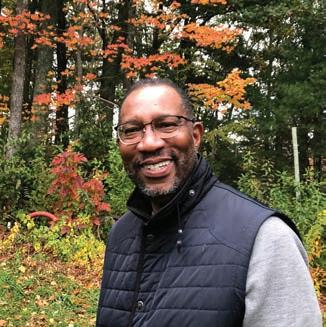
Joan Walker’s passion for longleaf pine landscapes did not start with a love of the trees. In fact, she rarely looked up during the hours of field work counting and measuring plants in the Green Swamp of North Carolina. Joan was intent on understanding how so many species coexisted in such a small area. Her work was the first to document the now well-known diversity of these plant communities.
Following her doctorate at the University of North Carolina and a post-doctoral appointment at Duke University, Joan served as faculty at Southeastern Louisiana University. Joan then worked as the first Botanist on the National Forests in Florida and later the first Botanist for the U.S. Forest Service Southern Region before moving to the Southern Research Station.
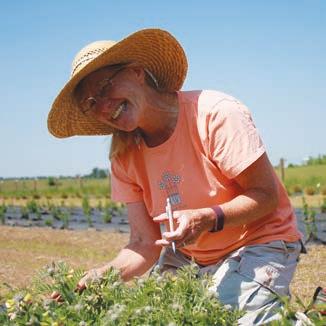
During her 26 years as a research ecologist, Joan applied ecological principles to solving management problems at different spatial scales across the longleaf range. She
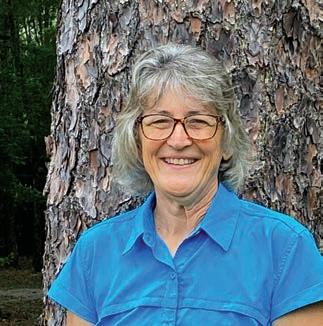
investigated topics as varied as developing silvicultural approaches for restoration and designing seed transfer zones for understory species to naming the smut that infects wiregrass. She also studied the biology of rare plant species, their breeding systems, pollinators, genetics, habitat requirements, and methods for starting new populations.
Since retirement in 2018, Joan has stayed active in longleaf by continuing research collaborations and presenting seminars. She and her husband Ralph Costa live with their family of pets in Mountain Rest, South Carolina.
Lauren Ward has served as the Executive Director of Conservation Without Conflict since January 2021. Conservation Without Conflict is both an idea and a coalition of public and private partners who support voluntary, collaborative, and sustainable approaches to conserving at-risk and listed wildlife and their habitats while keeping working lands working. Ward has also served as the General

Counsel and Director of Regulatory Affairs for Forest Landowners Association. She led the organization’s outreach program, bringing wildlife agency officials together with forest landowners and diverse stakeholders to build trust and execute solutions for species conservation on private forestlands. Throughout her career, Ward’s interdisciplinary expertise in natural resources policy, social sciences, and land management has given her a unique perspective on collaborative conservation and the role that innovative tools and partnerships can play in achieving landscape-scale goals. Ward earned her bachelor’s degree in English from Georgetown University in Washington, DC, and her J.D. from the University of Georgia School of Law. She also holds a Master’s in Natural Resources and a Ph.D. in Forest Resources from the Warnell School of Forestry and Natural Resources at the University of Georgia. Ward’s doctoral research examined the perspectives of private forest landowners regarding the Endangered Species Act and its implementation on private forestland across the United States.
Ward and her family live in Monroe, Georgia, where she enjoys hiking, running, and cooking homemade family recipes.

In July, Cody Pope started as Western Technical Assistance & Training Specialist, a new position for The Alliance. Cody was raised just north of the historic longleaf pine range in Mississippi but was introduced to the diverse ecosystem while studying environmental biology as an undergraduate at the University of Southern Mississippi (USM). Cody completed a master’s degree in forest resources and conservation from the University of Florida, researching longleaf pine forest response to Hurricane Michael at The Jones Center at Ichauway. Prior to joining The Longleaf Alliance, Cody worked as an agronomist for the Natural Resources Conservation Service. He currently lives in Hattiesburg, Mississippi, with his wife Melissa, a professor at USM.
Madison Richert joined The Longleaf Alliance as a Wetland Resource Technician with the Wetland Ecosystem Support Team (WEST) in July 2022. She grew up in Tulsa, Oklahoma,
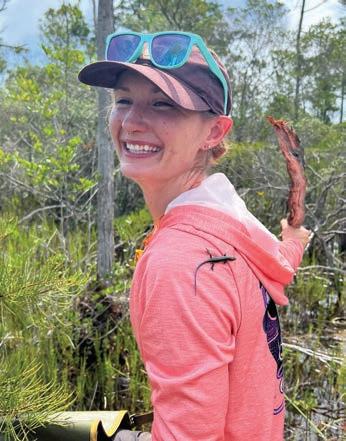
and moved to Florida in 2020. Madison is a student at the University of West Florida working on her bachelor’s in environmental science. Her prior experience includes working with Gulf Islands National Seashore. In this position, she gained experience with data collection and analysis for sea turtles, shorebirds, and beach mice.
Sean Seid served on the Seasonal Restoration Team, working to recover the reticulated flatwoods salamander. His positive, can-do attitude was noted by all the staff that had the opportunity to work with him. Sean recently left the team to start college at Pensacola State College and plans to pursue a field in natural resources at the University of Florida.

We wish Sean the best as he gains additional conservation knowledge and expertise. We know he will make a difference in restoring and managing the environment for which he cares so deeply.
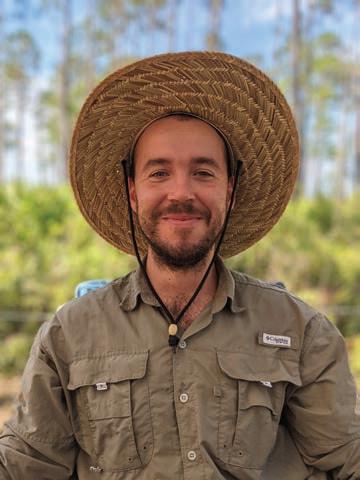



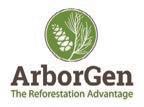


























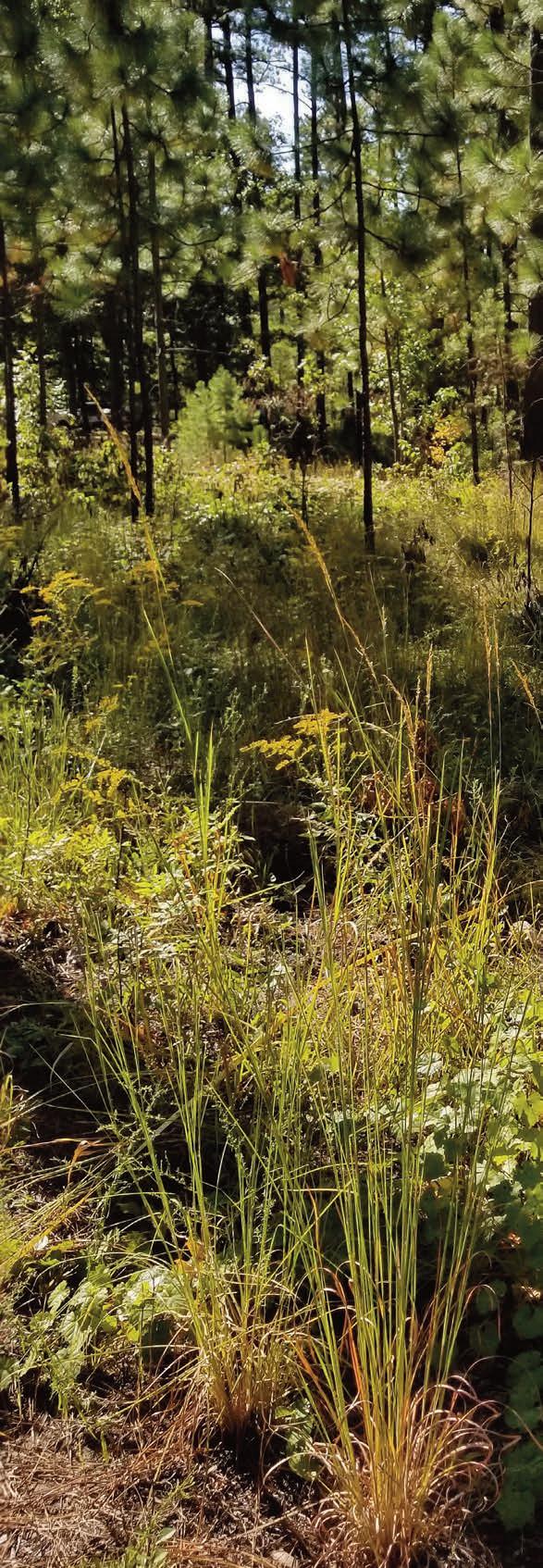
From incendiary vapors Come tales of a caper Where fire the destroyer Becomes fire the creator
Clearing duff to plant the seed Seedling from competition now freed Bolts upwards to the celestial rays And the painted azure display
To escape the summer flames Source of life that also maims Reaching for the vaulted firmament Then basking in solar contentment
Long needles bathe in sultry air Dancing in the daily zephyr Breezes round the branches flow Soothing symphony to compose
Creating for all a flawless treasure Providing transcendent pleasure The inspiring songs from the longleaf Offer ear and soul calming relief
By wind and the divine Performed in the finest of the pines In harmony with the sparrow Creating chords warm and mellow
To comfort and inspire As flora and fauna do admire And we the beholders and observers Offer gratitude with enchanted fervor
